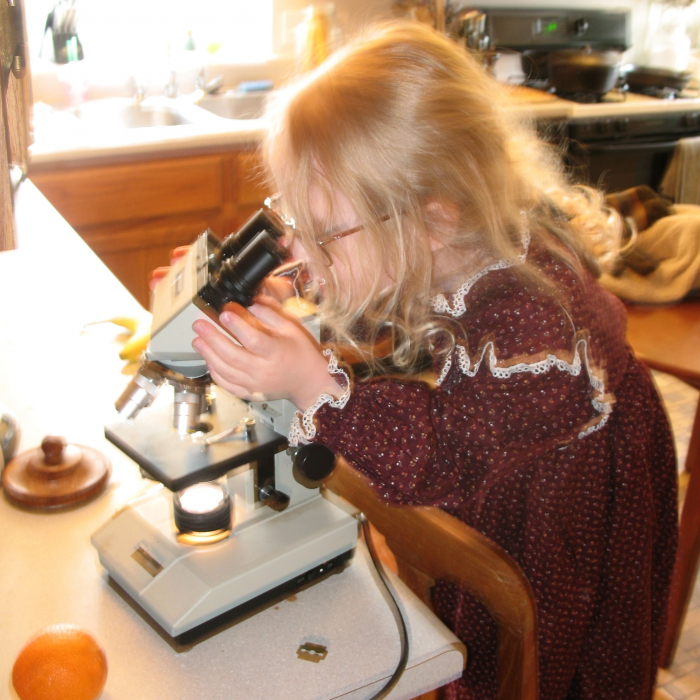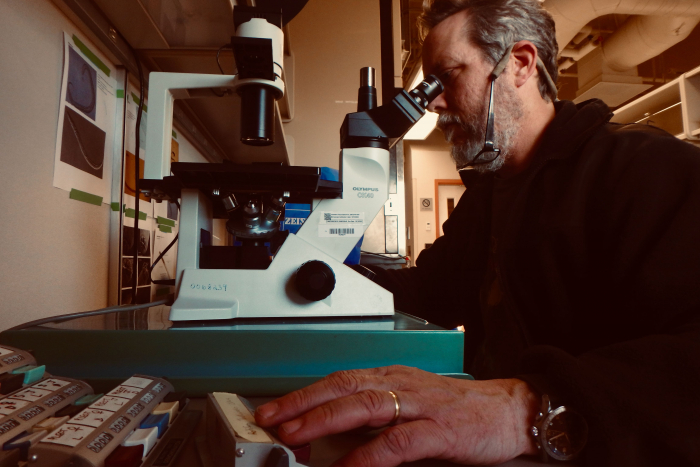What do you do all day?
Google must have heard me talking about microscopes because this picture from 14 years ago came up on my phone this morning. It's from a time my daughter and I found some weird stuff growing on a frog that was frozen under the ice in our pond. It just reminded me of how exciting it is to discover all the little things in our world.

I put together a short video that might, hopefully, give some insight into what happens when we are "Wormherding". Previously I have posted about collecting samples, extracting organisms from samples and analyzing samples. I think we have analyzed over 250 samples so far this season. This morning we had three left to do.

Today as I was doing something un-fun, Byron came in from his work-work to take a counting break. Counting is a therapeutic experience. When you put a sample onto a counting plate you join a few or a few thousand organisms in their little world. If I look frazzled or unmotivated, Jesse will say "Bill, do you want to count for a while?". Soon after Byron came in, Abigail got up to go to the refrigerator to get one for her break. There was only one left. One maybe for the entire season. I had also planned on recording it but had taken the battery out of the camera to charge. I think they were "good" samples too. Not 10,000 rotifers or thick balls of Plectus nematodes. No - a diverse sample from a nicely balanced, not too wet, not too moist soil. Not too much organic matter, and not too little. Lots to see and explore. I don't know who got the last one, but it wasn't me.
I dug around in the refrigerator and in the back I found a moss sample that was to be the source material for some moss images. I expectantly put that on a counting plate. Yes! It was a "good" one. Good diversity of creatures, living their best life. I tried to record what we see as we are counting the organisms in each soil sample. The camera didn't capture the same field of view as the microscope. There were also depth of field issues because of all the moss. I think it's a pretty representative video of what we do. I hope you enjoy.
Let me know if you want just a video of reading a slide without the edits and talking. I kind of like the uncut ASMR version myself.


Comments